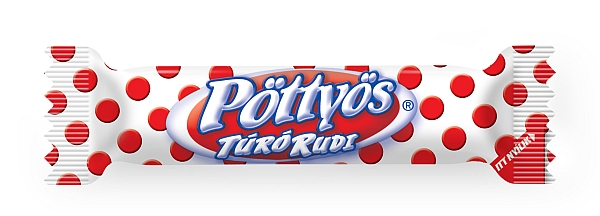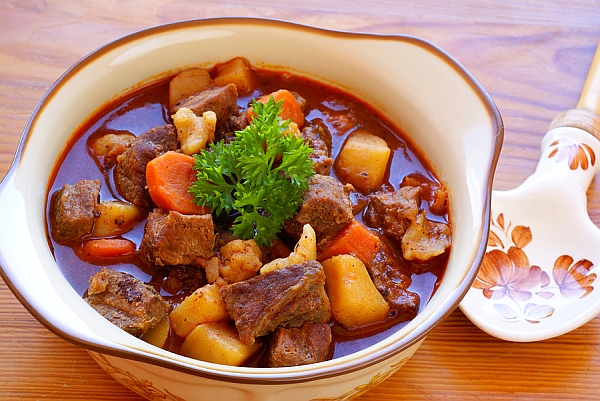
Traditional Hungarian cuisine reflects the rich and varied flavors of many international influences. Since the first Magyars were nomadic people, they learned from the Turkish and other cultures with which they came into contact. Soup was an important staple of their lifestyle. They used a bogrács, a large cast-iron pot that hung on an iron rod over the fire, for cooking soups. It was easily transported with the soup in the pot as the Magyars moved from place to place, and the soup was consumed over days. The bogrács is a popular cooking utensil even today and soup continues to be an important part of a meal.
Once the Magyars settled in the Carpathian Basin, pork was introduced into the diet with each family raising its own pigs. Culinary transformations occurred through marriage also. After King Matthias and Beatrice of Italy married, she introduced Italian influences into the cooking culture, including turkey, pasta, cheeses, garlic, and onions.
The Turks may have had the greatest influence on gastronomy as they introduced paprika to the culture. Hungary’s climate is perfect for growing the red peppers that are ground up to create the spice. At first, the elite only grew paprika peppers for their decorative value, but peasants grew them and used them for cooking. At one point in the 19th century, the rising cost of black pepper convinced the masses to switch to paprika, thus dubbing paprika török bors or Turkish pepper. Paprika comes in different varieties. It ranges from spicy hot (csípős) to sweet (édes) with other varieties in between, depending on the peppers used.
Another way the Turks influenced food habits was by taking all of the domestic animals with them only leaving the pigs as, due to their religion, they did not care about these lowly animals, thus making pork an important meat for the Magyars. Turks are also responsible for introducing strudel, piláf, lángos, and stuffed vegetables. They also introduced plants such as the tomato, sour cherry, corn, and tobacco.
When the Turks gave Hungarians coffee, it changed the culture in astonishing ways. In the late 1800s, there were more than 500 coffeehouses in Budapest alone. Many of the famous ones are where writers, artists, musicians, and other intellectuals gathered.
The Hungarian upper class adopted the French fashion of cooking as did the Austrian aristocrats. Perhaps this is where the love affair with goose liver originated. Middle-class Hungarians incorporated Austrian dishes in their everyday meals, adopting schnitzel, sausages, potatoes, and vegetable stews thickened with flour and lard. Today this vegetable stew is called főzelék and is a traditional favorite food.
Different parts of Hungary have regional traditions and favorite recipes, but any good Hungarian restaurant in Budapest incorporates some from each on their menu. Some restaurants specialize in the more exotic fare such as deer, or wild boar. Often, when deer is on the menu, it is translated as deer and not venison. It will be saddle of deer; this is the breast meat. Regardless of what is on the menu, if it is a traditional Hungarian menu, you are guaranteed that food will be plentiful and heavy. Hungarian cooking uses a great deal of pork or goose fat, which adds incredible flavors to dishes. Sour cream, potatoes, or a form of pasta are also added to enrich a dish, adding to that gluttony feeling after you finish. Just so you don’t miss any gastronomical experiences, we’ve put all the foods you should sample while here in a box at the end of this chapter. Some are discussed within this chapter also.
Lunch begins with soup. Gulyás, often mispronounced as “goulash,” is a meat soup usually made with beef or pork, carrots, and potatoes in a rich broth. Travelers often have the misconception that gulyás is a stew. Babgulyás is a hearty and delicious bean soup similar to gulyás. Hungary is famous for its gyümölcs leves, a cold fruit soup, which can be made from sour cherry, peaches, or apricots. Served in summertime, it makes a refreshing way to start a meal. Sárgaborsóleves, a split pea soup – a good winter seasonal choice – and halászlé, a fish soup, constitute meals in themselves.
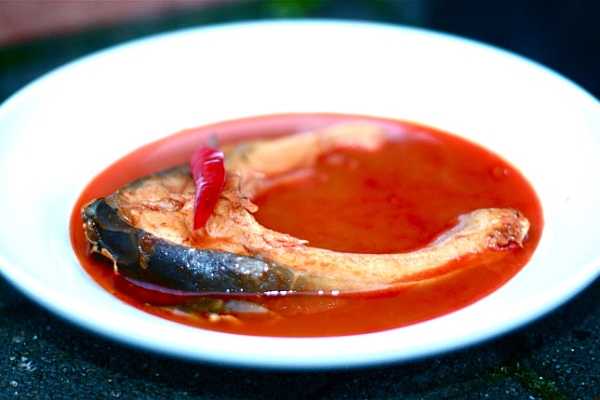
Entrees/main courses are generally some type of meat dish. Try the paprikás csirke, chicken cooked in a savory paprika sauce. It’s especially good with galuska, a pasta dumpling. Pulykamell, turkey breast roasted with various fruits and/or sauces, is also delicious. Another great choice is pörkölt, a stewed meat dish that comes in many varieties. Töltött káposzta, whole cabbage leaves stuffed with rice, meat, and spices, is another favorite. Cabbage is a winter staple food and appears in pastry also. Remember the word káposzta (cabbage) if you don’t want it as your savory pastry filling.
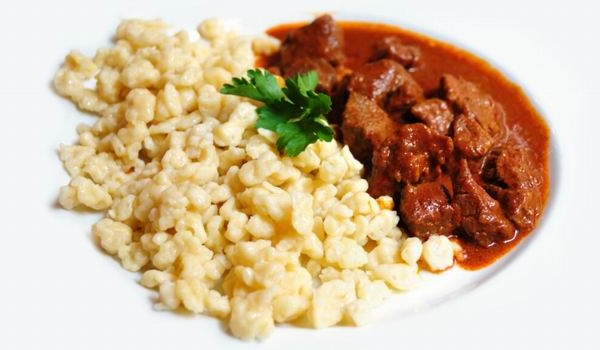
Vegetarianism is slowly, ever so slowly, being recognized in Hungarian restaurants; many establishments now offer a vegetable dish, usually consisting of seasonal steamed and grilled vegetables, or cheese plates. Hungarians look on vegetarians with suspicion, regardless of their nationality. Otherwise, vegetarians would do well to order lecsó tojással (eggs scrambled in a thick tomato-onion-paprika sauce), rántott sajt (batter-fried cheese with tartar sauce), or túrós csusza tepertő nélkül (a type of noodle with cottage cheese dish). The kitchen should be able to prepare any of these dishes to order, even if they don’t appear on the menu.
Snack foods include lángos, a piece of dough pulled into a small pizza shape and served with your choice of toppings: cheese, ham, and garlic sauce are the most popular, but you can also have powdered sugar and whipped cream. Palacsinta, a paper-thin crepe stuffed with a multitude of offerings for either a sweet or a savory light bite, is another excellent choice. Kürtös kalács, a hollow, tubular honey cake, is an old-fashioned pastry cooked on a wooden bolt; it is sometimes available in metro stations and at outdoor markets and fairs, but is best when freshly baked. Fagylalt (ice cream) is the national street food, especially in warm months. Scoops are tiny, so order more than one or you will have more cone than ice cream. Fresh fruit flavors are seasonal: in the summer its eper (strawberry) and meggy (sour cherry) and in the fall flavors include szilva (plum) and körte (pear). Summer regulars are delicious fahéj (cinnamon), mák (poppy seed), and rizs (rice).
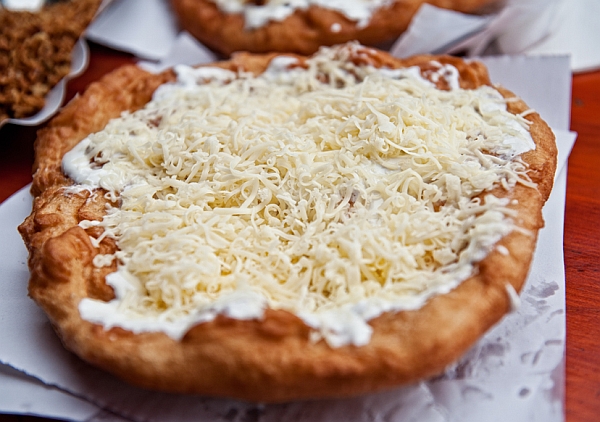
Hungarian pastries are mouthwatering, but the cakes are not as sweet or moist as other countries’ offerings. If you like your pastry with some moisture, choose one of the creamy types. The light, flaky rétes are filled with fruit (apple, plum, cherry), poppy seeds, or cheese. Csoki torta is a decadent chocolate layer cake, and a Dobos torta is a layered cake topped with a shiny hard caramel crust. (Hint: Take the crust off first and eat it separately). Mákos pastry, made with poppy seeds, is a Hungarian specialty. Gesztenye (chestnuts) are another popular ingredient in desserts; some are chestnut cream with whipped cream on top or chestnut cream in a pastry. Beigli, a traditional Christmas holiday pastry, appears everywhere during the season. A logshaped pastry with crushed walnuts or poppy seeds baked in it like a jelly roll, it is sliced into bite-sized portions.
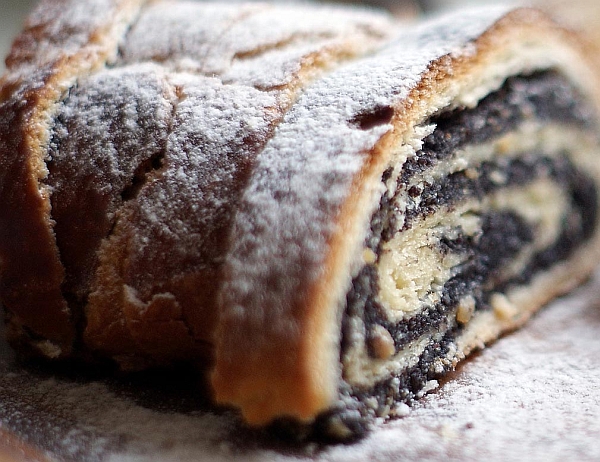
Picnickers should pick up a loaf of Hungarian bread and sample any of Hungary’s world-famous salamis. Before you decide to pack some to take home, check the Customs regulations. A number of tasty cheeses are produced in Hungary as well: Karaván füstölt (a smoked cheese), Edami (Dutch cheese), márvány (similar to bleu cheese), and juhtúró (a soft, spreadable sheeps cheese similar in flavor to feta). In season, fresh produce is cheap and high quality, but variety is limited compared to many other countries. In the winter, fresh fruits and vegetables are slim pickings with apples, pears, cabbage, potatoes, and carrots being the most common choices. In summer, you’ll be amazed at the abundance of fresh produce and the low-cost but limited varieties at the colorful markets. One type of berry or another is continually available throughout the summer months: strawberries (eper) appear in markets in May; raspberries (málna), blueberries (fekete áfonya), blackberries (szeder), and sour cherries (meggy) start hitting the market in June.
Beer, Wine & Spirits
Hungary never developed a beer culture. Its beer is unremarkable, but don’t tell a Hungarian this; they are staunchly proud of anything Hungarian. A number of European beers are now produced under license in Hungary. Your best bet though are Czech beers, such as Budvar, Staropramen, or Pilsner Urquell, which are the real thing.
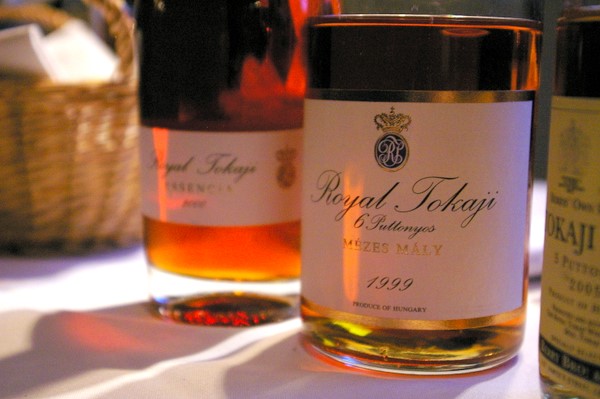
Hungarian wines are excellent; Wine tours in Budapest
The most renowned red wines come from the region around Villány, a town to the south of Pécs near the Croatian border. As a result of an aggressive marketing campaign mounted by the former Communist regime, many travelers are familiar with the red wines from Eger, especially Egri Bikavér (Eger Bull’s Blood). However, Eger wines, though rich and fruity, are markedly inferior to Villányi reds. The country’s best white wines are generally believed to be those from the Lake Balaton region, though some Hungarians insist that white wines from the Somló region (northeast of Lake Balaton) are better. Tokaj wines – száraz (dry) or édes (sweet) – are popular as aperitifs and dessert wines. Travelers seeking advice on Hungarian wines are encouraged to visit one of the full-service wine stores in Budapest. You can also pick up the free pamphlet Wine Regions in Hungary at Tourinform.
Unikum is the Hungarian national liqueur similar to Germany’s Jagermeister or Italy’s Fernet Branca. This aromatic bitter liquid is a taste worth acquiring. It is still produced according to the original recipe owned by the Zwack family (the current owner of the company, a Zwack family member, was Hungary’s first ambassador to the U.S. after the fall of Communism). The distilled fruit brandy palinka is another variety of Hungarian firewater that is often referred to as schnapps. It is a liqueur with high alcohol content and some fruit or honey flavor. Palinka is traditionally brewed at home where apricots, plums, pears, or honey are plentiful; folk wisdom claims it has medicinal value. Only the better brands have much fruit flavor at all.
Coffee &Tea
Hungarians drink kávé (coffee) throughout the day, either in coffeehouses or less seldom in standup coffee bars. The menus in a number of coffee shops have expanded greatly. In general, when ordering coffee in Hungary, you are still ordering espresso. An “American” coffee called hosszú kávé (long coffee) will be an espresso with additional hot water added, nothing close to filtered coffee. Espresso drinks are now available in most coffeehouses, as is koffein mentes (decaffeinated coffee). Tejeskávé, a Hungarian version of café au lait, is another option.
Tea drinkers will have a less difficult time than in the past; most food establishments have come to recognize the tea drinker, offering a selection of tea flavors to choose from. Tea is now readily available in bars and cafes, plus there have been a number of tea cafes that have opened and are prospering. For more variety and a peek at Hungary’s burgeoning world of herbal medicine, look for teas in any of the numerous tea or herbal shops: gyógynövény, herbárium, or gyógytea.
Water
While csapvíz (tap water) is safe to drink in Budapest, it isn’t generally offered in restaurants; when you order water they charge for the bottle. Ask for tap water specifically, stating “not bottled.” Hungarians increasingly drink Ásványvíz (carbonated mineral water), szóda viz, (carbonated tap water), or szénsav mentes (purified bottled water). All these varieties of water are available at restaurants as well as at delicatessens and grocery stores.
You Haven’t Been to Hungary If You Haven’t Tried…
Főzelék
This hearty dish is somewhere between a soup and a stew in consistency, but without any chunks of meat or veg. There are a number of varieties, but green pea, potato, and chicken are the most popular. The vegetable varieties sometimes contain animal fat, so vegetarians should ask ahead of time. Lángos. Many cultures have their own variety of dough that is deep-fried in fat. Here it’s topped with shredded cheese and/or ham, finally sprinkled with garlic juice. There are now many types of toppings, but a Mexikói (Mexican) is not authentic. The best place to try them is in the Central Market Hall (Központi Vásárcsarnok) upstairs on the right-hand wall of food booths.
Halászlé
This is fish soup, usually made with carp, pike, or perch, but sometimes with a couple of different fish. Widely available in restaurants.
Palacsinta
The French call these crepes. The Hungarians call them a national treasure. There are a number of fillings to make these a complete meal. Some palacsinta restaurants have complete menus of entrees and desserts consisting of three to five crepes.
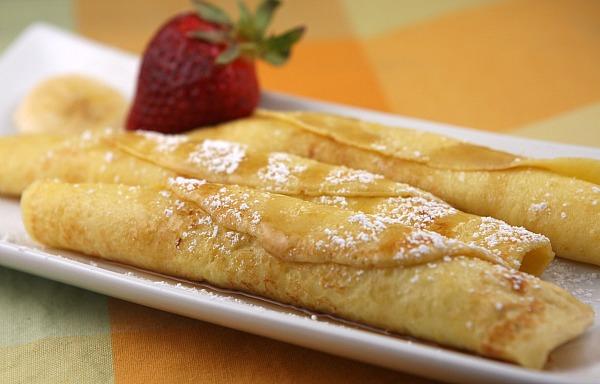
Somlói Galuska
A rich and treasured dessert, this will satisfy a chocolate lover’s sweet tooth. Served in a bowl, cubes of spongy cake are sprinkled with a rum flavoring, and then vanilla sauce is poured over the moist cubes followed by a topping of chocolate sauce, which is finished off with whipped cream. It is a dieter’s nightmare and often on restaurant dessert menus.
Túrós táska (sweet cheese bag)
A cheese-filled strudel-type dessert and available in most bakeries.
Túró rudi
This is so Hungarian, you won’t find it outside of the country. Many returning visitors look for it on their first day back. Shaped like a small log, it is a cheese called quark, which is thinly coated with chocolate. The most famous is the “natur” flavor, though there are others with fruit added. The original is in a white, red-dotted wrapper. You will not find this on any menu, but if you venture into any convenience store or supermarket, they will be plentiful in the refrigerator case.
